August 15, 2025 | 21:59 GMT +7
August 15, 2025 | 21:59 GMT +7
Hotline: 0913.378.918
August 15, 2025 | 21:59 GMT +7
Hotline: 0913.378.918
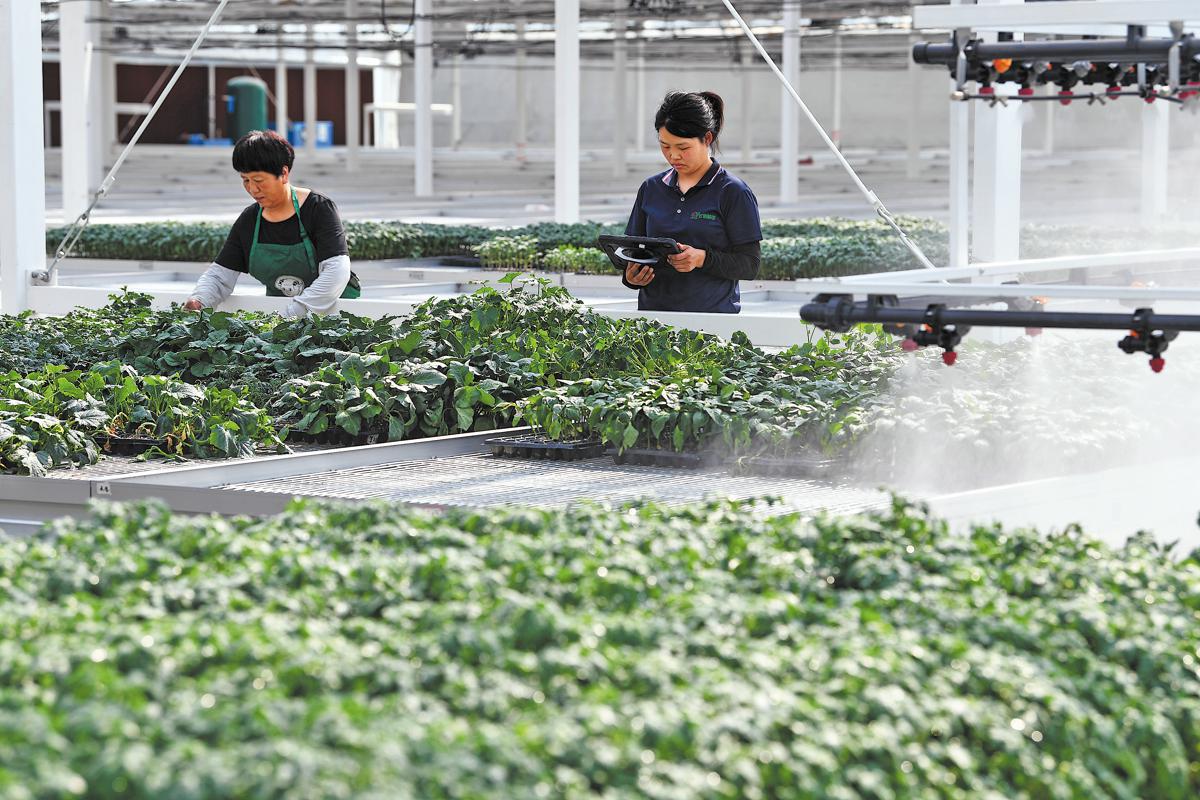
A technician (right) checks the growth of seedlings through a monitor in a greenhouse at the Zhixin Digital Seedling Breeding Industrial Park in Raoyang county, Hebei province. Photo: CUI JIADONG/FOR CHINA DAILY.
In Raoyang county, Hebei province, a high-tech approach is overturning long-held beliefs that North China's sweltering summers are ill-suited for seedling cultivation.
At the Zhixin Digital Seedling Breeding Industrial Park in Raoyang in Hengshui city, algorithms now replace gut instinct.
The cutting-edge solutions transform challenging conditions of high temperatures, heavy rain, and intense sunlight into precisely controlled parameters, enabling consistent and high-quality seedling production in the hot season.
"In the past, we relied on experience. Now, we rely on algorithms," said Wei Fangcui, the park's director, while navigating the park's cloud-based management platform via a tablet.
The system integrates over a dozen critical parameters, including micro-climate, soil conditions, and crop growth stages, using machines to autonomously optimize irrigation, nutrient delivery, light exposure and ventilation cycles.
Stepping into the vast complex reveals a scene of quiet efficiency — automated rail-guided seedling beds glide smoothly, precision spray systems deliver moisture, and clusters of internet of things sensors display temperature and humidity data in real time.
This highly integrated "breeding-cultivation-promotion" facility, a model of intelligent agriculture, now produces over 120 million robust seedlings annually, according to the park.
"Problems are spotted instantly and solved with a click," said technician Xie Keju, using a mobile app to track seedlings' "body temperature" and "nutritional intake". Sensors in eight vast glass greenhouses — each nearly 10,000 square meters and housing up to one million plants — feed real time data into the system, triggering automatic adjustments to ensure every seedling receives balanced nourishment.
"Crucially, the platform also provides early disease and pest warnings and tracks the growth history of individual plants," he said.
The outcomes are compelling. According to Wei, the park achieves a five percent higher rate of strong, viable seedlings and reduces the overall cultivation cycle by five percent.
"These tech-based seedlings are the 'chips' of modern agriculture," she said.
Technology is also reshaping productivity. An artificial intelligence-powered precision seeder allows one worker to sow 45 trays in three minutes, work that once took four people almost an hour. Xie now manages 300,000 seedlings singlehandedly, with his monthly income rising from 3,000 to 8,000 yuan ($417 to 1,112).
This transformation stems from Raoyang county's "Science Commissioner plus Local Expert" training program, which has delivered over 100 specialized trainings on smart equipment and pest management, grooming over 10,000 skilled fruit and vegetable technicians, according to local authorities.
"Quality must be controlled from the very source," said Li Bingshun, deputy director of Raoyang county's agriculture and rural affairs bureau.
This focus has attracted over 30 prominent breeding enterprises to establish operations in Raoyang. Together with 44 local seedling bases, they form an integrated breeding and promotion network, he said.
The technological journey extends seamlessly from greenhouse to market. In the packaging facility, automated sorting lines place seedlings into custom boxes at a rate of three per second, each affixed with a QR code tracing its origin and journey.
"These 500,000 tomato seedlings head to Beijing tomorrow via refrigerated transport, reaching fields within 48 hours," Wei Fangcui said in an interview in July, pointing to live national demand data.
Since its February launch, the park has supplied over four million premium seedlings to multiple places, including the Ningxia Hui autonomous region, as well as provinces of Hebei and Henan, Wei said.
The supplies cover over a dozen varieties of common and specialty fruit and vegetable seedlings, she added.
"The return on our technology investment is increasing rapidly," Wei said.
Their seedlings, prized for superior genetics and consistent quality, have driven tangible benefits — farmers report average yield increases of 15 to 20 percent per hectare alongside significantly improved produce quality, achieving market satisfaction rates exceeding 90 percent, according to Wei.
This revolution not only supplies premium seedlings nationally but also catalyzes local industry transformation.
Raoyang has established Hebei's first High-Quality Fruit and Vegetable Seed Industry Alliance, guiding breeding bases and planning 10,667-hectare demonstration zones. Additionally, it integrates data from the entire industry chain to create a regulatory platform.
According to local statistics, Raoyang has cultivated 28,667 hectares of fruits and vegetables, including 22,667 hectares of protected greenhouse crops. These crops produce 2.4 million metric tons annually and supply 2,000 tons daily to neighboring Beijing and Tianjin.
"We will amplify our leading role, aiming to bring 40 more bases into the digital fold within two years, creating scale and synergy for shared resources and technology," Wei said.
She added that continuous research& development investment will refine their algorithms and deepen IoT integration, embedding technology into every facet of seedling cultivation.
Chinadaily
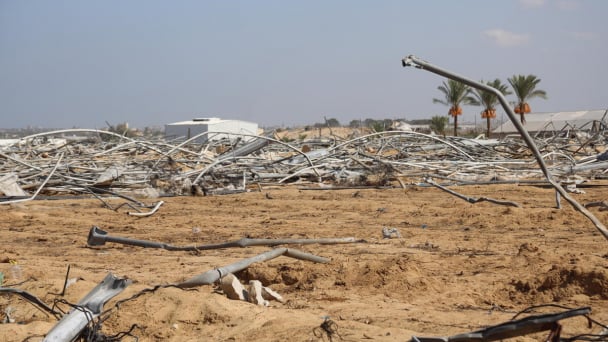
(VAN) Food production cannot be reactivated without a significant shift in accessibility, safety, investments and support for local communities and livelihoods.

(VAN) Officials are debating how to placate farmers’ need for migrant labor without appearing to offer amnesty to undocumented immigrants.
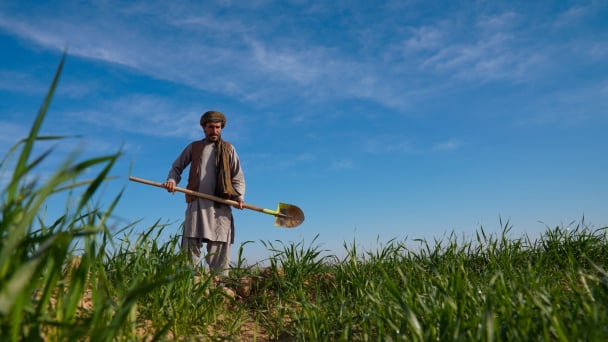
(VAN) New partnership to help over 150,000 people enhance food production, incomes and climate resilience across 15 provinces by May 2026.

(VAN) Floods that damaged hydropower dams in Nepal and destroyed the main bridge connecting the country to China show the vulnerability of infrastructure.
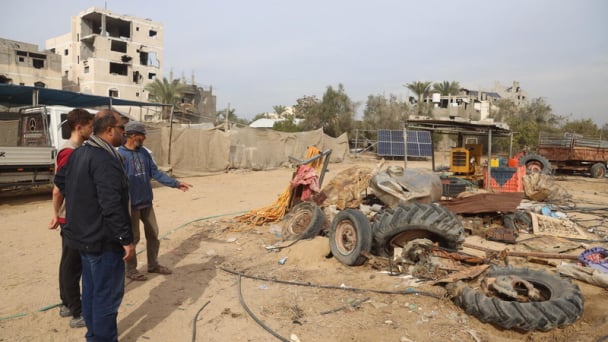
(VAN) Immediate and sustained ceasefire and unhindered humanitarian access are critical to avert imminent Famine.
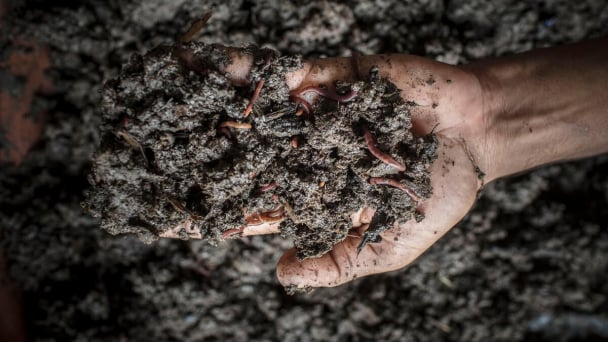
(VAN) FAO-led publication outlines structure and highlights agenda including new harmonized indicators and capacity building accessible to all.